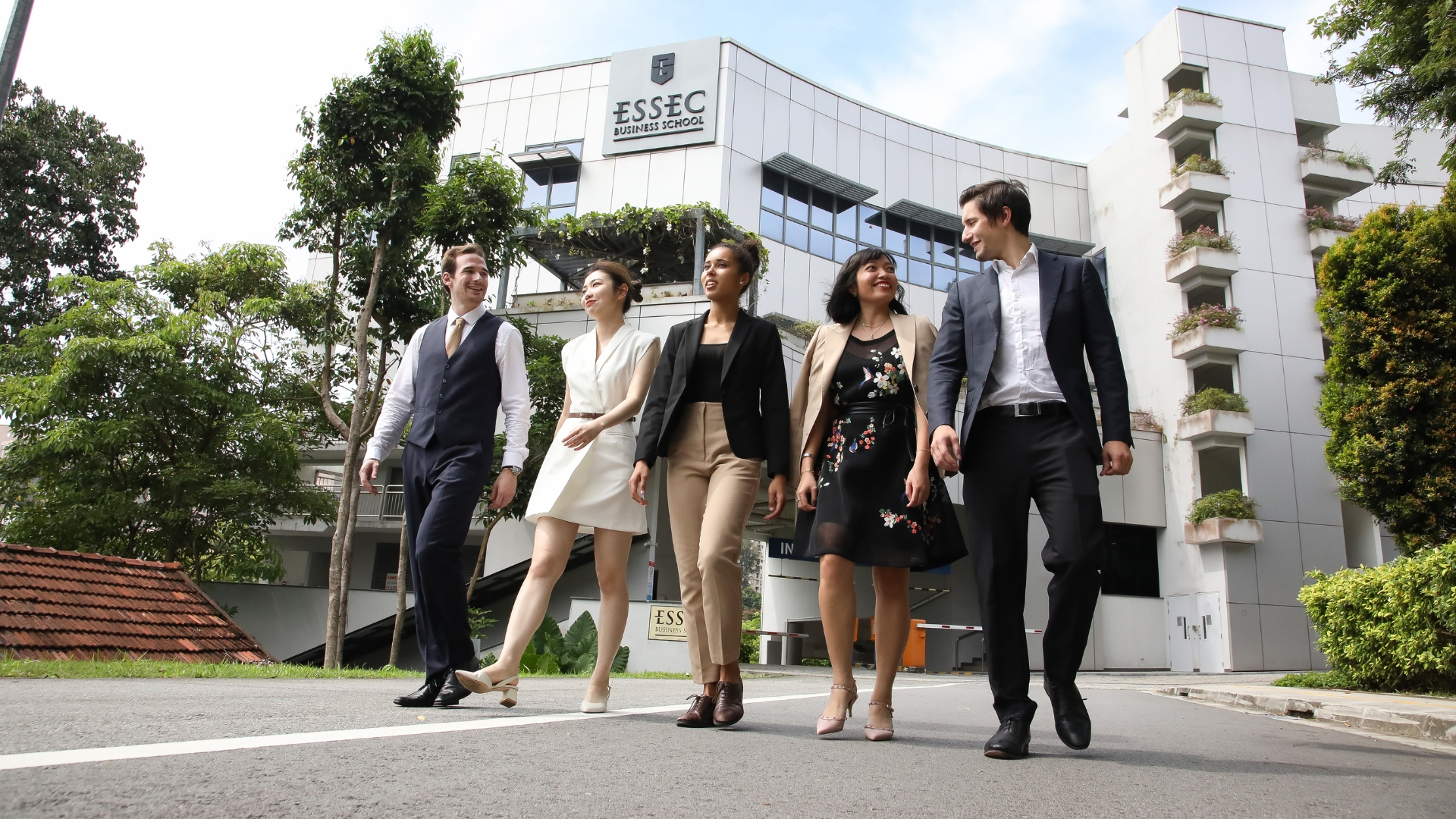Giorgio Zambon, Ksheera Rangarajan, and Zhelin Yu took different paths to the ESSEC Asia-Pacific campus. Giorgio, who is from Italy, recently graduated from Bocconi University with internships at L’Oreal and Mazars.
Ksheera, who hails from India, has two years of work experience as an engineer at Google, and Zhelin, who comes from China, has a master’s degree in finance from IE Business School.
To all three, a master’s degree was the solution to accelerate career growth. The ESSEC Master in Strategy & Management of International Business (SMIB) stood out because QS ranked it second in the world and first in Asia among Master’s in Management programs.
It is also more affordable than an MBA, does not require years of work experience, and has a campus in Singapore.
1 | Exposure to Business in Asia
For Ksheera, attending ESSEC Asia-Pacific was a chance to have the “best of both worlds.” She would enjoy the European style of education from a top institution and improve her knowledge of how business is conducted in Asia.
The Asia-centric lens is seen in the case studies focused on the region through networking sessions and initiatives like the Asian Strategy Challenge (ASC), which allows students to work directly with an Asian business to solve a real-world challenge.
Ksheera explains that these experiences are essential because “working in India, China, Singapore, and the Middle East is all quite different. The program helps us understand the subtle differences and how these can affect the working culture.”
Zhelin hopes to join a private equity firm in Asia in the long run, and she agrees that this knowledge is crucial for those who want to work there.
Speaking from his experience interning at a financial institution in China after his master’s program in Spain, he says: “I found the financial markets to be very different and that I couldn’t use what I learned effectively.”
Like Ksheera, he hopes that attending ESSEC Asia-Pacific will help him bridge the gap between the East and West and open doors to opportunities in more countries.
2 | A Global Profile To Attract Recruiters
With Asia’s growing influence, knowledge about the region can only make one more attractive to recruiters, Giorgio, who hopes to start a career in strategy consulting, adds.
“I saw coming to Singapore as a once-in-a-lifetime chance to live in Asia. I felt this would be a good opportunity to evaluate if I could reside in the area in the future,” he says.
And even if he chooses not to, by the end of the SMIB program, he’ll have studied in three different continents—France, Singapore, and the US.
“This will give me a global perspective so I understand how different markets work and how to approach different stakeholders, which is valuable for companies,” he says.
3 | Campus, Services, and Cohort Size
Having been at the Singapore campus for a semester, Giorgio observes that a more intimate cohort size is also an advantage.
“Students are given more attention, there is a strong sense of camaraderie, and there are more chances to connect with alumni and fellow students,” he says, explaining that these interactions can lead to fruitful future connections.
Ksheera feels similarly, sharing that she has had positive experiences with the career services.
“I aspire to become a product manager at a startup, and the career services team has supported me in building a personalized plan based on this goal,” she says.
To those still deciding which campus to choose, as Giorgio aptly puts it, there is nothing to lose.
“If you don’t come to the Asia-Pacific campus and get a glimpse of Asia, it’s hard for you to find a job in the region. But if you come, you can look for a job in Singapore and still find one in Europe.”
RELATED POSTS
How is Learning Different at ESSEC APAC: According to SMIB Students
ESSEC Master in Strategy & Management of International Business students weigh the differences between a master’s program and their undergraduate…
Building Global Citizens at the ESSEC GBBA Program
How the ESSEC Global BBA program ensures graduates have the cultural and social awareness to thrive in the global world.
Why Experienced Professionals Choose the MiF Program at ESSEC Asia-Pacific
Master in Finance students from the class of 2023-2024 share how the program offers them an advantage.
Why Global Talents Call Singapore Home
Learn how Singapore’s strategic location, economic strength, and cultural blend, along with its investment-friendly policies, have made it a central…
Why Study in Singapore at ESSEC APAC
Find out why Singapore attracts international students with its top-notch infrastructure, strategic location, and strong economy, making it an…
Why Choose ESSEC’s Master’s Programs
Explore how ESSEC’s top-ranked Master’s programs are tailored to enable students to seize distinct global opportunities across top sectors.







